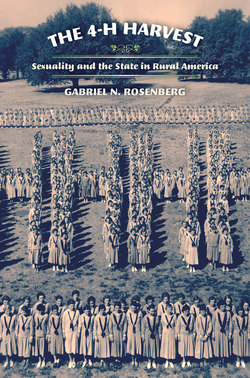The 4-H Harvest

Реклама. ООО «ЛитРес», ИНН: 7719571260.
Оглавление
Gabriel N. Rosenberg. The 4-H Harvest
Отрывок из книги
The 4-H Harvest
Series editors:
.....
In identifying this infrastructure, I am referencing the historical sociologist Michael Mann’s concept of “infrastructural power,” originally defined by Mann as “[t]he capacity of the state to actually penetrate civil society, and to implement logistically political decisions throughout the realm.”27 His concept shifts attention from the sovereign rights of the state to the technologies that actively and materially constitute governing networks; he pushes historians of the state to move from problems of law to problems of logistics and thus makes possible an empirical approach that historian William Novak calls a “bottom-up” history of governing and statecraft. 4-H’ers entered into alliance with the state, but their value to that alliance depended on their simultaneous ability to embody an innocent future; 4-H’s political efficacy hinged on its political innocence. 4-H’s state/civil status was always fluid, contingent, and contextual.28 At some moments, 4-H’ers embodied the state; at other moments, they embodied its antithesis, civil society. This ambiguity was not a problem to be overcome. It was, to the contrary, a strategic asset and the very root of 4-H’s political power.
* * *
.....